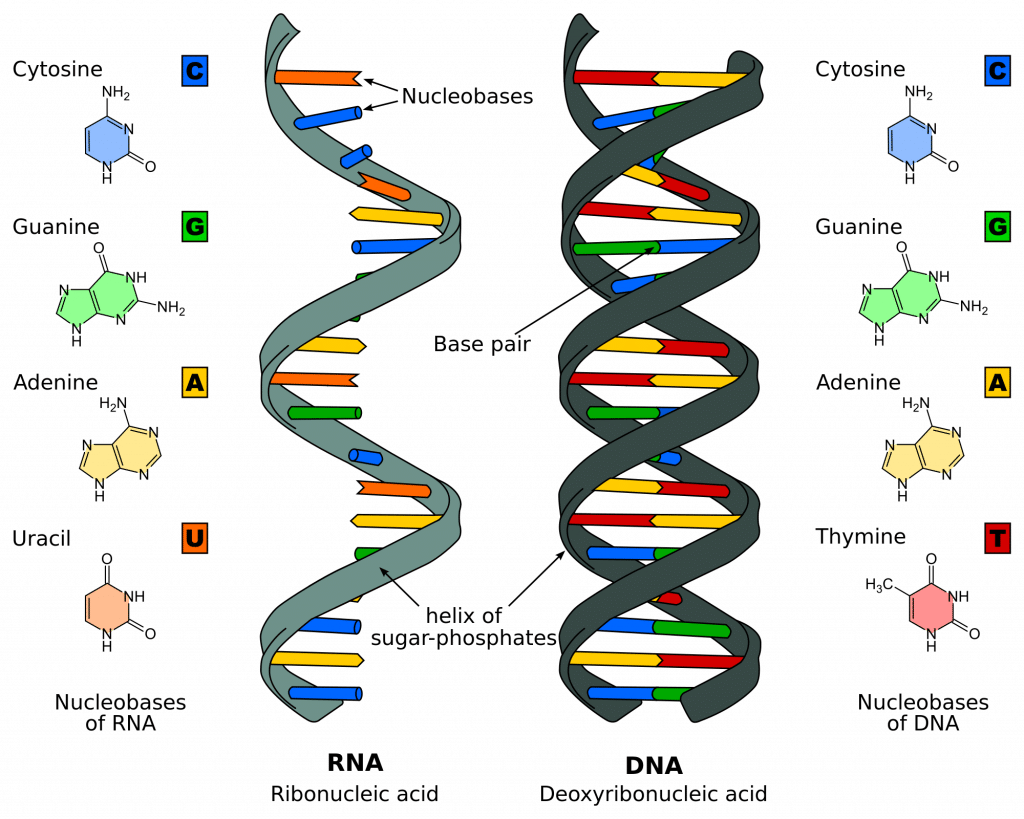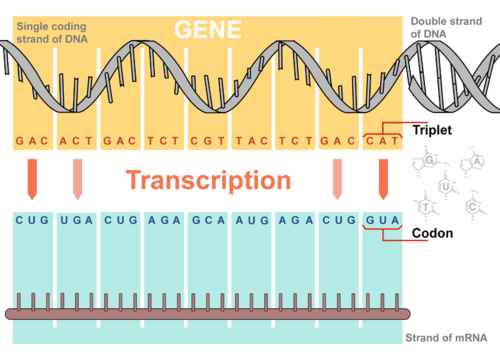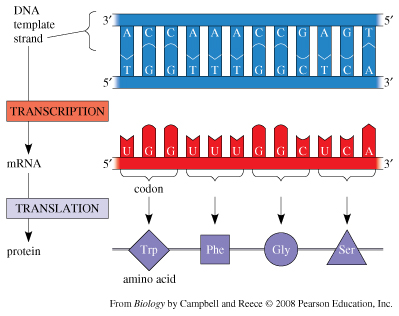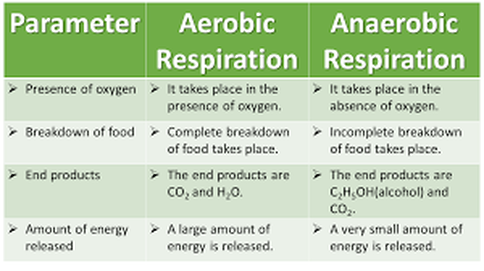Describe What Occurs During Transcription After the Base-pairing Is Complete
Depending on the gene being transcribed there are two kinds of termination signals but both involve repeated nucleotide sequences in the DNA template that result in RNA polymerase stalling leaving the DNA template and freeing the mRNA transcript. During translation the RNA molecule created in the transcription process delivers information from the DNA to the protein-building machines.

Transcription Of Dna Stages Processing Teachmephysiology
The β-subunit binds to the ribonucleoside triphosphate that will become part of the nascent recently-born mRNA molecule.

. This region will be translated into protein. Each subunit has a unique role. During transcription an enzyme called RNA polymerase reads one strand of the double-helix and writes a complementary strand of RNA.
It uses DNA as a template to make an RNA molecule. This video provides a review of these steps. Transcription ends in a process called termination.
Termination depends on sequences in the RNA which signal that the transcript is finished. In initiation the enzyme RNA polymerase binds to DNA at the promoter region. After base pairing during transcribblefrabble the P-RNA moves to the ribofleeb where it meets with xDRNA which is carrying saliva acids.
Tree bark of the message into a polypickle-itis is. This area will be the template for replication to begin. 3 During the process of initiation anticodon-codon complementary base pairing begins as the ribosomal subunits join together at a start codon.
Transcription is the process of making an RNA copy of a gene sequence. Describes what occurs after the process of base pairing is completed. The RNA molecule is the link between DNA and the production of proteins.
After the bases are paired with new bases as part of new nucleotides the sugars and phosphates are bonded to neighboring nucleotides to fasten the sides of the molecule. The genetic information flows from DNA to protein and this flow of information takes place in a sequential process of transcription and translation. This copy called a messenger RNA mRNA molecule leaves the cell nucleus and enters the.
RNA polymerase II is located in the nucleus and synthesizes all protein-coding nuclear pre-mRNAs. The three main steps of transcription are initiation elongation and termination. The RNA transcript is then used to produce a protein.
Translation reads the genetic code in mRNA and makes a protein. The promoter sequence is found on one strand only this. The two α-subunits are necessary to assemble the polymerase on the DNA.
Describe what occurs when molecule of DNA unzips. RNA polymerase II is responsible for transcribing the overwhelming majority of eukaryotic genes. This is performed by an enzyme known as DNA helicase.
DNA helicase disrupts the hydrogen bonding between base pairs to separate the strands into a Y shape known as the replication fork. In the cell cytoplasm the ribosome reads the sequence of the mRNA in groups of three bases to assemble the protein. These subunits assemble each time a gene is transcribed.
Illustration from AP 6. Termination is the ending of transcription and occurs when RNA polymerase crosses a stop termination sequence in the gene. In DNA transcription DNA is transcribed to produce RNA.
Only one strand of DNA is copied during the process of transcription known as the template strand and the RNA formed is called the mRNA. Both in pro and eukaryotic cells the process takes place in different places. Eukaryotic transcripts need to go through some processing steps before translation into proteins.
In elongation RNA polymerase transcribes DNA into RNA. This results in the single nucleotide chain to be copied. Transcription takes place in the cells nucleus and starts when an enzyme called RNA polymerase binds to the section of DNA it needs and opens the double helix.
Here is a more complete definition of translation. DNA is directional in both strands signified by a 5 and 3 end. By the end of transcription mature mRNA has been made.
RNA is transcribed from a DNA template strand in much the same way as the synthesis of proteins occurs. During transcription DNA partially unwinds by the enzyme helicase. After transcription mRNA leaves the nucleus and enters the cytoplasm of the cell.
RNA polymerase III is also located in the nucleus. And the β binds the DNA template strand. This acts as the messaging system to allow translation and protein synthesis to occur.
This results in the single nucleotide chain to be copied. On termination the process of transcription is complete. It is translated in blocks of three nucleotides called codons.
Eukaryotic pre-mRNAs undergo extensive processing after transcription but before translation. Transcription uses a strand of DNA as a template to build a molecule called RNA. For a protein-coding gene the RNA copy or transcript carries the information needed to build a polypeptide protein or protein subunit.
RNA polymerase uses one of the DNA strands the template strand as a template to make a new complementary RNA molecule. You can stop watching the video at 535. DNA RNA Protein.
RNA polymerase binds at an area called the promoter which is a found a short distance upstream from the gene itself. 1 In the cytoplasm it becomes associated with ribosomes constructed out of rRNA. The goal of transcription is to make a RNA copy of a genes DNA sequence.
They disassemble once transcription is complete. During transcription a strand of mRNA is made that is complementary to a strand of DNA. Essentially what happens during transcription is that an m RNA copies down the instructions for making a protein from DNA.
An enzyme called RNA polymerase proceeds along the DNA template adding nucleotides by base pairing with the DNA template in a manner similar to DNA replication. The mRNA strand is complete and it detaches from DNA. Transcription is the first step in gene expression and is the process by which a genes DNA sequence is copied transcribed to make an RNA molecule.
RNA then leaves the nucleus and goes to a ribosome in the cytoplasm where translation occurs. In bacteria once RNA Polymerase transcribes a specific sequence of R-nucleotides from the DNA template strand transcription ends or terminates. RNA polymerase reads the DNA strand from the 3 to 5 direction and synthesizes the complementary strand of messenger RNA in the 5 to 3 direction.
When this sequence is synthesized a section of the RNA bends back on itself forms a short double helix based on complementary base pairing. Within the mature mRNA is the open reading frame ORF. 2 tRNA carries amino acids to mRNA.
During elongation RNA polymerase tracks along the DNA template synthesizes mRNA in the 5 to 3 direction and unwinds then rewinds the DNA as it is. Prokaryotic transcription and eukaryotic transcription differ in a number of ways which will be discussed below. First an enzyme called RNA polymerase opens up a section of DNA and assembles a strand of m RNA by reading the sequence of bases on one of the strands of DNA.

Steps Of Genetic Transcription Biology For Majors I

Topic 2 7 Dna Replication Transcription And Translation Amazing World Of Science With Mr Green

Topic 2 7 Dna Replication Transcription And Translation Amazing World Of Science With Mr Green
Comments
Post a Comment